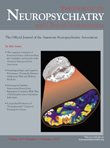Is the Migraine Headache Ameliorated by Enhancing Chloride Current?
SIR: Blood vessels respond to transmural pressure elevation with constriction and to pressure reduction with dilation. This behavior, which is called myogenic response, is believed to play a central role in the maintenance of constant blood flow and capillary hydrostatic pressure (P c ) during variations in systemic arterial pressure. 1
Kitamura and Yamazaki 2 have postulated that stretching the vessel wall by increased blood pressure activates the volume regulated Cl − channels. This probably causes the membrane to become depolarized and consequently to activate L -type Ca 2+ channels and reduce the arterial diameter.
On the other hand, the autoregulation of cerebral hydrostatic pressure is completely different in migraine patients compared with healthy subjects and it seems that myogenic cerebrovascular autoregulation is disturbed in some kinds of migraines. 3 , 4
It may be possible that Cl − channels contribute to migraine disease. We propose that some of the symptoms of migraine headaches may be cured by enhancing Cl − channel currents. In accordance with our hypothesis, Smith et al. 5 mentioned that BTS 72664, which enhances chloride currents through picrotoxin-sensitive chloride channels, is likely to have antimigraine activity. Surely, experimental and clinical research is needed to verify this hypothesis.
1 . Davis MJ, Hill MA: Signaling mechanisms underlying the vascular myogenic response. Physiol Rev 1999; 79:387–423Google Scholar
2 . Kitamura K, Yamazaki J: Chloride channels and their functional roles in smooth muscle tone in the vasculature. Jpn J Pharmacol 2001; 85:351–357Google Scholar
3 . Muller M, Marziniak M: The linear behavior of the system middle cerebral artery flow velocity and blood pressure in patients with migraine: lack of autonomic control? Stroke 2005; 36:1886–1890Google Scholar
4 . Heckmann JG, Hilz MJ, Katalinic A, et al: Myogenic cerebrovascular auto regulation in migraine measured by stress transcranial Doppler sonography. Cephalalgia 1998; 18:133–137Google Scholar
5 . Smith SL, Thompson KS, Sargent BJ, et al: BTS 72664: a novel CNS drug with potential anticonvulsant, neuroprotective, and antimigraine properties. CNS Drug Rev 2001; 7:146–171Google Scholar



